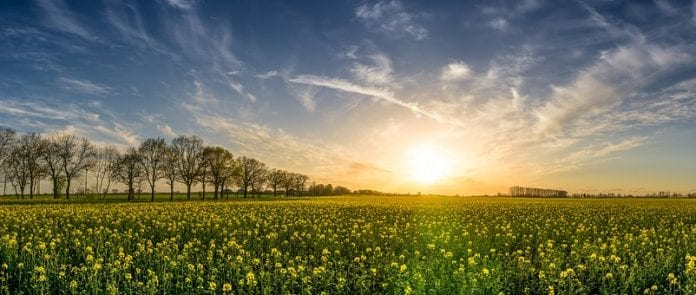A mix of innovative trials work and data analysis is helping to reveal cabbage stem flea beetle’s secrets, including how its environment affects how much damage it can inflict on oilseed rape (OSR).
This article provides some of the interim findings from the ADAS-led project (as presented in the latest annual report). Current spray thresholds for the pest are also listed.
Objective 1. Review agronomic factors affecting CSFB adult feeding/larval infestation
With access to data from thousands (1610) of commercial and non-commercial sites, the research team is identifying the key factors associated with an increased CSFB risk. Using models, they have found, for example, that higher numbers of larvae in the spring are associated with crops sown in August, rather than September. Such early drilled crops tend to emerge quicker, providing soil moisture is sufficient, moving the crop through its most susceptible phase. Warmer spells during November and January also tended to increase spring larvae numbers.
Objective 2: Determine the effect of agronomic factors on CSFB adult feeding damage and larval infestation
Fields sites monitored during the project (74 sites in 2017/18) are also helping to better understand the agronomic factors linked to CSFB pressures. Two trials investigating the effect of variety and seed rate on CSFB damage were also drilled. Although, differences in adult CSFB damage and larval infestation between varieties were found, they were not statistically significant. Differences in CSFB infestation between seed rates were also found but analysis of the data is still to be completed.
Objective 3: Understand crop tolerance to adult feeding damage and larval infestation and use this to revise thresholds for adults and larvae
One of the biggest uncertainties about CSFB has surrounded yield impacts associated with larvae damage. Insecticide treatments are being used to create trial plots with differing larval pressures. The trials are also looking at the effect of variety and seed rates. Due to the complexity associated with yield loss, it is too early to draw conclusions. Results will be presented in the final report, which is due next year.
Objective 4: Assess alternative control options for CSFB
With pyrethroid resistance in CSFB spreading, the work also looks at non-chemical control options.
One avenue under investigation is the defoliation of affected crops before CSFB larvae move from the leaf petioles to the stem, where they cause the most damage. Research conducted in Australia and Canada has shown that OSR crops can be defoliated to remove the larvae with little impact on seed yield, provided the timing is right.
One trial has been analysed to date. Compared with unmown control plots or plots mown after stem extension, plots mown in December or January were associated with reduced CSFB larval numbers and increased yields, although differences in yield were not statistically significant.
A further trial (conducted in pots) found only 32 per cent of larvae from mown OSR debris could reinfest other plants, which suggests mowing crops causes high larval mortality.
Image: Defoliation trials
The use of volunteer OSR (vOSR) as a trap crop for CSFB is also being studied for the first time. The approach is well worth investigating as CSFB wing muscles degenerate once they have located a plant to feed on and this makes it difficult for them to move on to another crop. Two trials have looked at delaying vOSR control until mid-September. At one trial site, delaying vOSR control in an entire field of OSR stubble resulted in up to 88 per cent fewer adult CSFB, up to 48 per cent less adult beetle feeding damage and up to 36 per cent more plants in adjacent newly emerging OSR. At the second trial site, results were inconclusive (possibly because control of vOSR was only delayed in part of a field of OSR stubble). Results suggest that if a large enough area of vOSR is left until mid-September, it can act as a trap crop, drawing CSFB adults away from nearby drilled OSR crops.
Request for trap crop sites
ADAS is looking for two farm sites to participate in trap cropping studies in 2018. At each farm, two adjacent fields are required – one coming out and the other going into OSR. If you are interested in taking part, please sacha.white@adas.co.uk
Also…
For further information on CSFB, visit the dedicated web page cereals.ahdb.org.uk/csfb
For information on the importance of good control of volunteer OSR to manage erucic acid risks, visit cereals.ahdb.org.uk/ea
Source: AHDB














